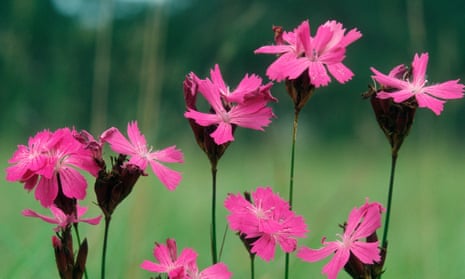What is it?
This plant may have been named after an order of monks that dates back to the 11th century, but Dianthus carthusianorum is a particularly useful one for our small modern gardens. It has magenta flowers from now to late summer, held on slim stems around 40-50cm tall above a nest of strap-like leaves, and works well amid grasses in gravel and prairie gardens. As garden writer Val Bourne has noted, it has the same see-through quality that turned Verbena bonariensis into a garden favourite – only this is evergreen, so you’ll have foliage all winter, too.
Any good varieties?
The Guardian’s product and service reviews are independent and are in no way influenced by any advertiser or commercial initiative. We will earn a commission from the retailer if you buy something through an affiliate link. Learn more.
‘Rupert’s Pink’ is a compact form at just 20cm tall.
Plant it with?
Plant in a flower cutting patch, as Sarah Raven does, use it as border edging or dot through a wildlife garden; you can even try it on a green roof. Grass experts Knoll Gardens suggest teaming it with molinias; designer Tom Stuart-Smith pairs it with Penstemon barbatus ‘Coccineus’ in prairie planting.
And where?
Needs well-drained soil, either neutral or on the alkaline side, and full sun.
Any downsides?
Not everyone likes bright pink flowers. But they’re wrong, right?
What else does it do?
The flowers are scented and pollinator-friendly.

Comments (…)
Sign in or create your Guardian account to join the discussion